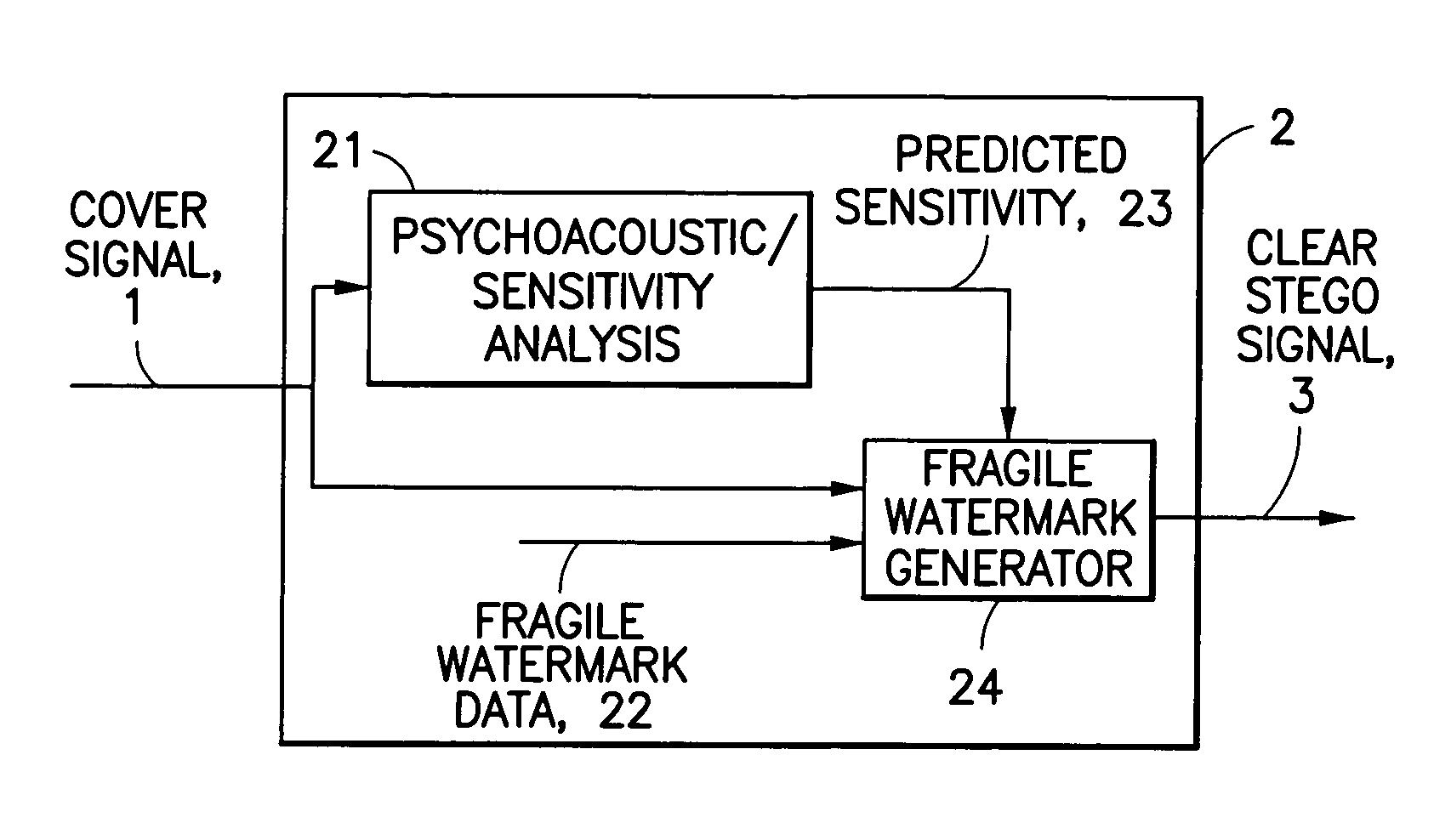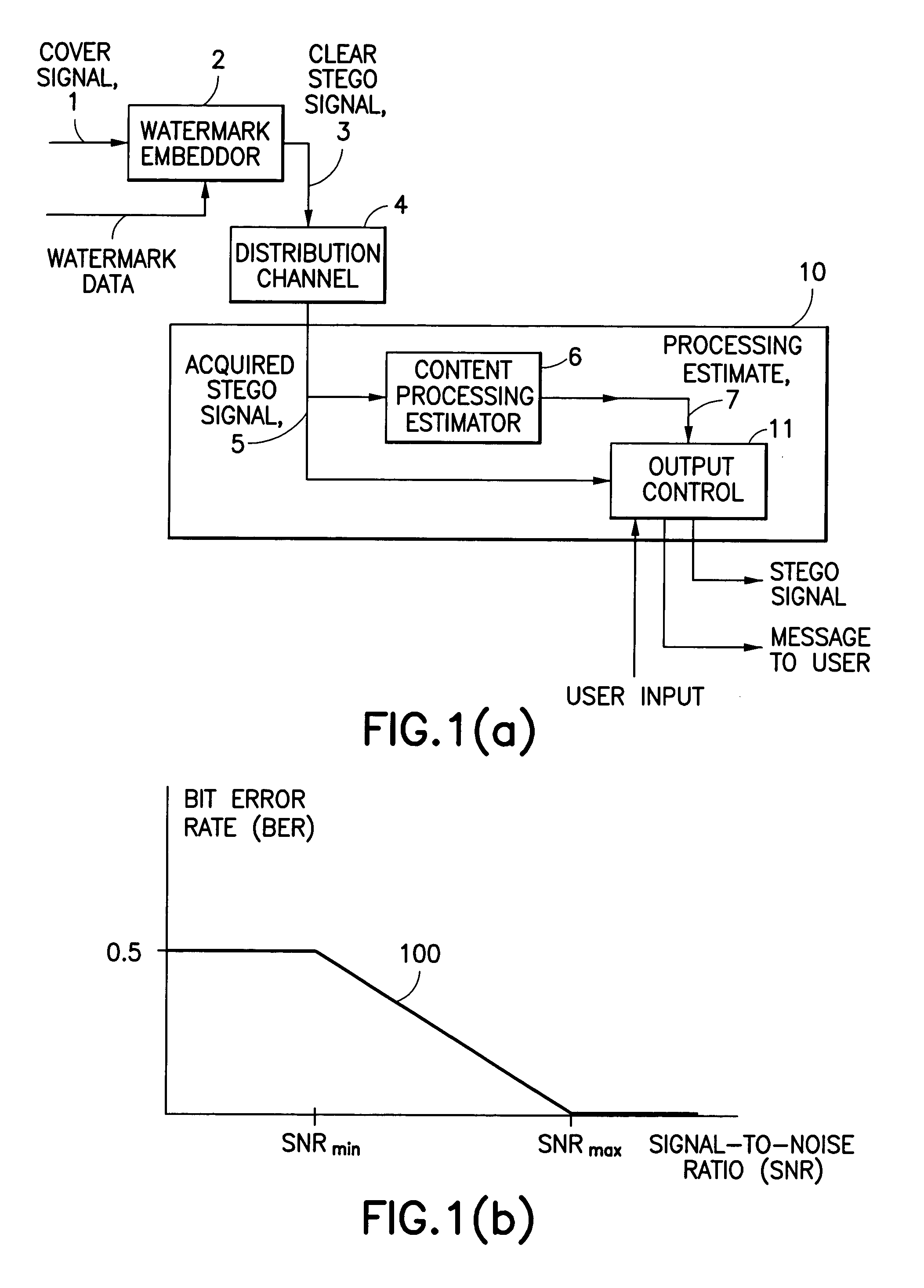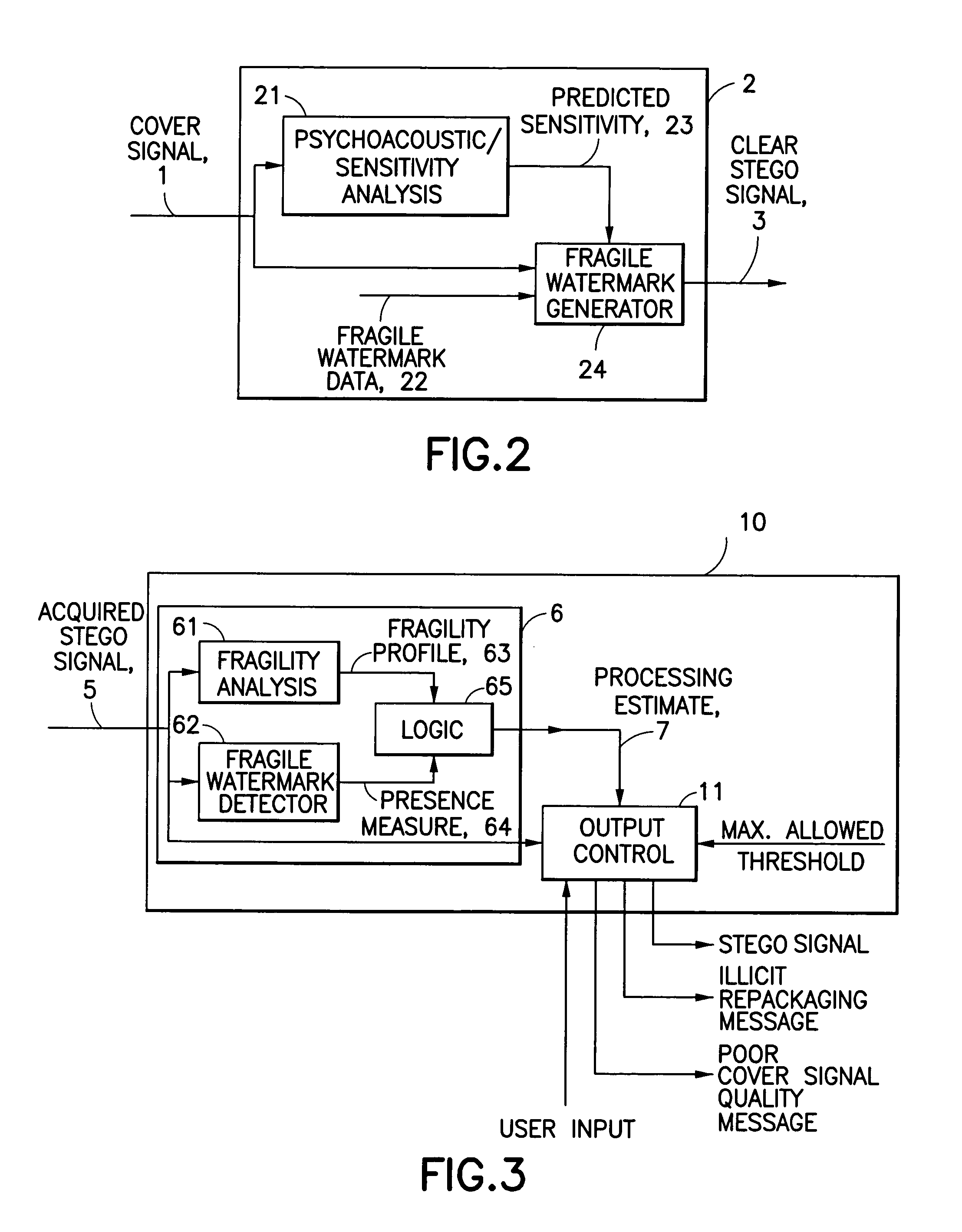Method and apparatus for detecting processing stages applied to a signal
a processing stage and signal technology, applied in the field of methods and apparatuses, can solve problems such as prone to degradation of fragile watermark layers, and achieve the effect of increasing strength and fragility of watermarks
- Summary
- Abstract
- Description
- Claims
- Application Information
AI Technical Summary
Benefits of technology
Problems solved by technology
Method used
Image
Examples
example 1
[0074]FIG. 2 and FIG. 3 illustrate the choices for the architecture of the watermark embeddor 2 and the corresponding content processing estimator 7 in the context of this example. On the embeddor side (FIG. 2), the cover signal 1 is processed through a fragile watermark generator 24 to lead to the clear stego signal 3. The fragile watermark data 22 is fixed with respect to the cover signal fragility. To ensure that the entire embedding process does not affect the audio quality of the cover signal, the watermark generator 24 is controlled by a psychoacoustic / sensitivity analysis module 21, which analyzes the cover signal 1 and produces its predicted sensitivity 23. The higher the predicted sensitivity, the less energy will be injected by the watermark generator 24.
[0075]On the processing estimator (receiver) side (FIG. 3), the acquired stego signal 5 is sent to both a fragile watermark detector 62 and a fragility analysis module 61. The detection results provide a Presence Measure 6...
example 2
[0078]FIG. 4 and FIG. 5 illustrate the choices for the architecture of the watermark embeddor 2′ and the corresponding content processing estimator 6′ in the context of this example. On the embeddor side (FIG. 4), the cover signal 1 is processed through a fragile watermark generator 24′ to lead to the clear stego signal 3. The fragile watermark data 22 is combined with the results of the fragility analysis module 26 to form a message that is embedded into the cover signal 1. As previously seen with the watermark generator 24 (FIG. 2), the watermark generator 24′ is controlled by a psychoacoustic / sensitivity analysis module 21, which analyzes the cover signal 1 and produces its predicted sensitivity 23.
[0079]The Fragility analysis function 25 provides a Fragility Profile to the Fragile watermark generator 24′. This information is carried in the watermark in the clear stego signal.
[0080]On the processing estimator side (FIG. 5), the acquired stego signal 5 is sent to the fragile water...
example 3
[0087]FIG. 6 and FIG. 7 illustrate the choices for the architecture of the watermark embeddor 2″ and the corresponding content processing estimator 6″ in the context of this example. On the embeddor side (FIG. 6), the cover signal 1 is processed through a robust watermark generator 28, a fragile watermark generator 24, and a combiner 29 to form the clear stego signal 3, which carries both robust and a fragile watermark layers. In the context of this example, both the robust and the fragile watermarks carry fixed watermark data with respect to the fragility analysis. As discussed, the watermark generators 24 and 28 are controlled by a psychoacoustic / sensitivity analysis module 21, which analyzes the cover signal 1 and produces its predicted sensitivity 23.
[0088]On the processing estimator side (FIG. 7), the acquired stego signal 5 is sent to both a watermark detector 69 and a fragility analysis module 61. The watermark detector 69 is designed to look for both the robust watermark lay...
PUM
 Login to View More
Login to View More Abstract
Description
Claims
Application Information
 Login to View More
Login to View More - R&D
- Intellectual Property
- Life Sciences
- Materials
- Tech Scout
- Unparalleled Data Quality
- Higher Quality Content
- 60% Fewer Hallucinations
Browse by: Latest US Patents, China's latest patents, Technical Efficacy Thesaurus, Application Domain, Technology Topic, Popular Technical Reports.
© 2025 PatSnap. All rights reserved.Legal|Privacy policy|Modern Slavery Act Transparency Statement|Sitemap|About US| Contact US: help@patsnap.com



